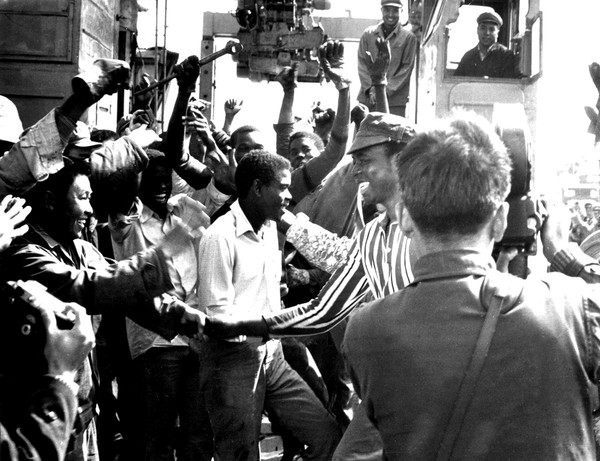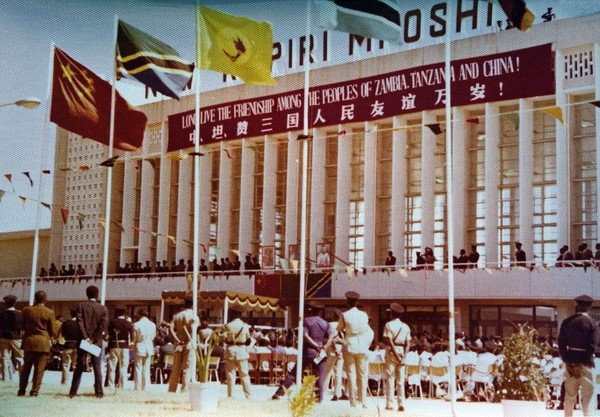By Huang Peizhao, People's Daily
It's been about half a century since China aided the Tanzania-Zambia Railway to Africa. Today, the railway is still facilitating residents along its route and making contributions to local economic and social development. It is like a bond that closely links the hearts of the Chinese and African peoples.
Tanzania and Zambia declared independence in the 1960s amid the national independence and liberation movement in Africa. Both of them saw an urgent demand to realize economic independence then. For Zambia, a landlocked country, building a railway leading to the port of Dar es Salaam, its biggest city, would help it expand its copper exports and enlarge its source of income. Tanzania also needed such a railway to boost its economy.

The 1,860 km Tanzania-Zambia Railway starts from Dar es Salaam in the east and ends in Kapiri Mposhi, Zambia in the west. Its construction took eight years from 1968 to 1976. According to Bruno Ching'andu, Managing Director of Tanzania-Zambia Railway Authority (TAZARA), China offered interest-free loans for the two countries, and dispatched over 50,000 engineers and technicians to Africa to assist the building of the railway.
Building the Railway needs a tremendous number of engineering equipment. The Railway crosses the Great Rift Valley, which features extremely complicated landforms and huge height differences. The construction of the railway involved 320 bridges and 26 tunnels.

It was built after eight years of relentless efforts and became a transport artery linking Tanzania and Zambia. Sixty-nine Chinese experts and technicians were buried in the Cemetery for Memorable Deceased Chinese Experts Assisting Tanzania 25 km southwest of Dar es Salaam, including 51 who sacrificed their lives for building the railway and its technical cooperation.
"The railway is a bridge of Africa-China friendship. We should work to realize the hopes of our predecessors and carry forward the Tanzania-Zambia Railway spirit," Ching'andu remarked.

Wu Wei, vice general manager of the East Africa branch of China Civil Engineering Construction Corporation, said that the maintenance of the Tanzania-Zambia Railway has always been on the Chinese side, and there was once a 500-member team consisting of Chinese experts in Africa for maintenance work.
Even today, dozens of Chinese experts are still going to Africa each year to offer technical support and ensure the smooth operation of the half-century-old railway, Wu added.

The Tanzania-Zambia Railway plays a significant role in promoting regional economic development. Marcus, sales manager of Fast Freight, said that cargo transport from Dar es Salaam to other major cities once relied on roads and was often delayed due to traffic congestion and bad weathers.
"The Tanzania-Zambia Railway has tremendously reduced the shipping time and cost, and also improved customer satisfaction," he said.
Juma, a retired engineer of TAZARA, called the Tanzania-Zambia Railway an economic corridor that helps his people get rid of poverty.
The retired engineer studied railway engineering in China twice. He said the railway changed his life, turning him from a farmer's son to a respected engineer.
Following the spirit of the Tanzania-Zambia Railway, China is still playing an active part in the railway construction in Tanzania today. Chinese companies have won the bid to build the Phase 5 and Phase 6 of the Tanzania Standard Gauge Railway, helping the African country enhance its transport capacity and creating massive jobs for local communities.
According to incomplete statistics, Chinese companies helped African countries build and upgrade more than 10,000 km of railways between 2000 and 2021, including the Mombasa-Nairobi Standard Gauge Railway and the Addis Ababa-Djibouti Railway. Infrastructure projects under the Belt and Road Initiative (BRI) are offering inexhaustible energy for building connectivity, strengthening transport and developing local economy, winning high recognition from African countries.
Dennis Mwaba, Professor of Engineering at the University of Zambia, said that Africa-China cooperation creates opportunities for African countries' industrialization. The BRI is promoting in-depth cooperation between the two sides and constantly deepening Africa-China friendship, he added.

